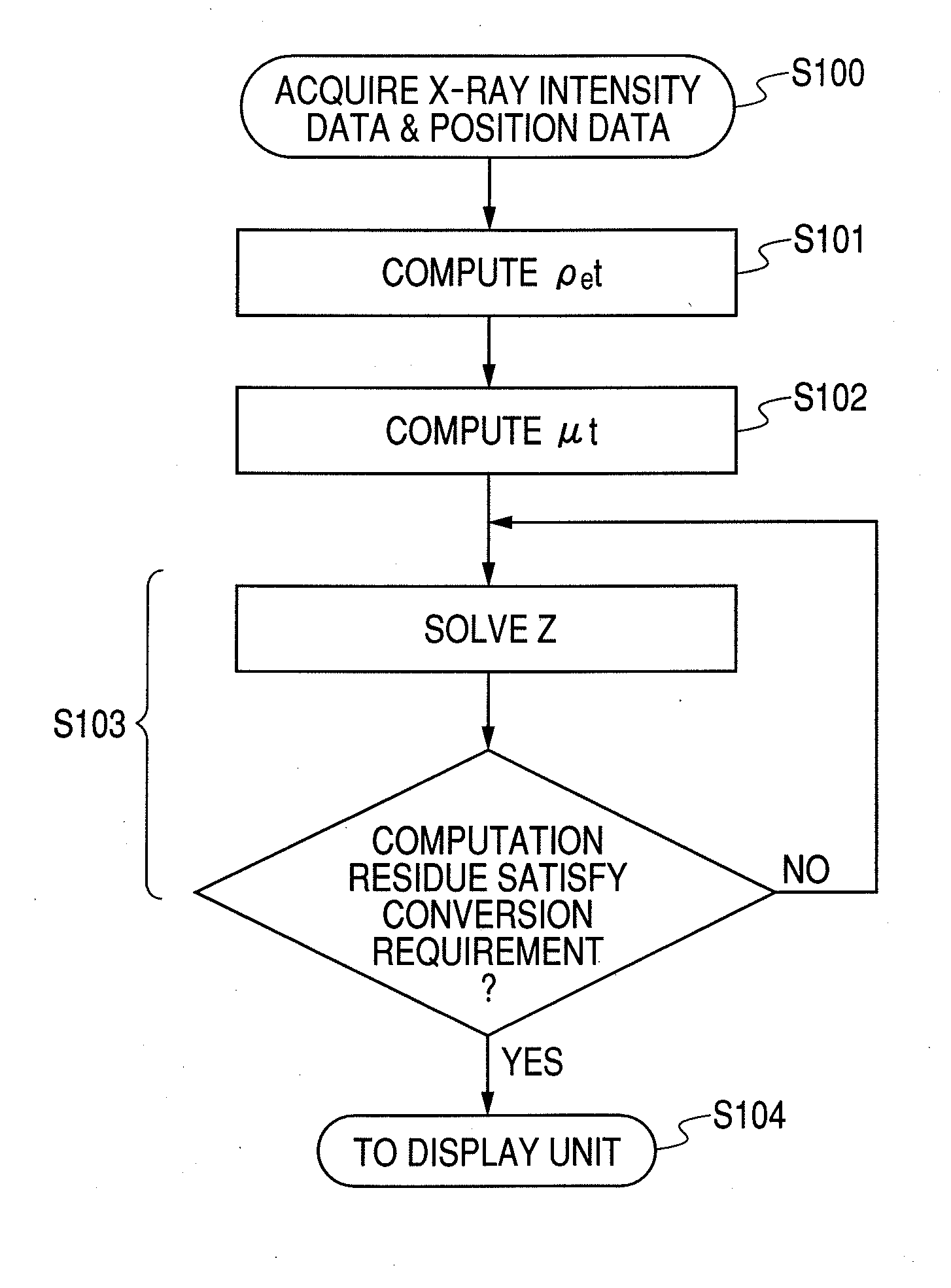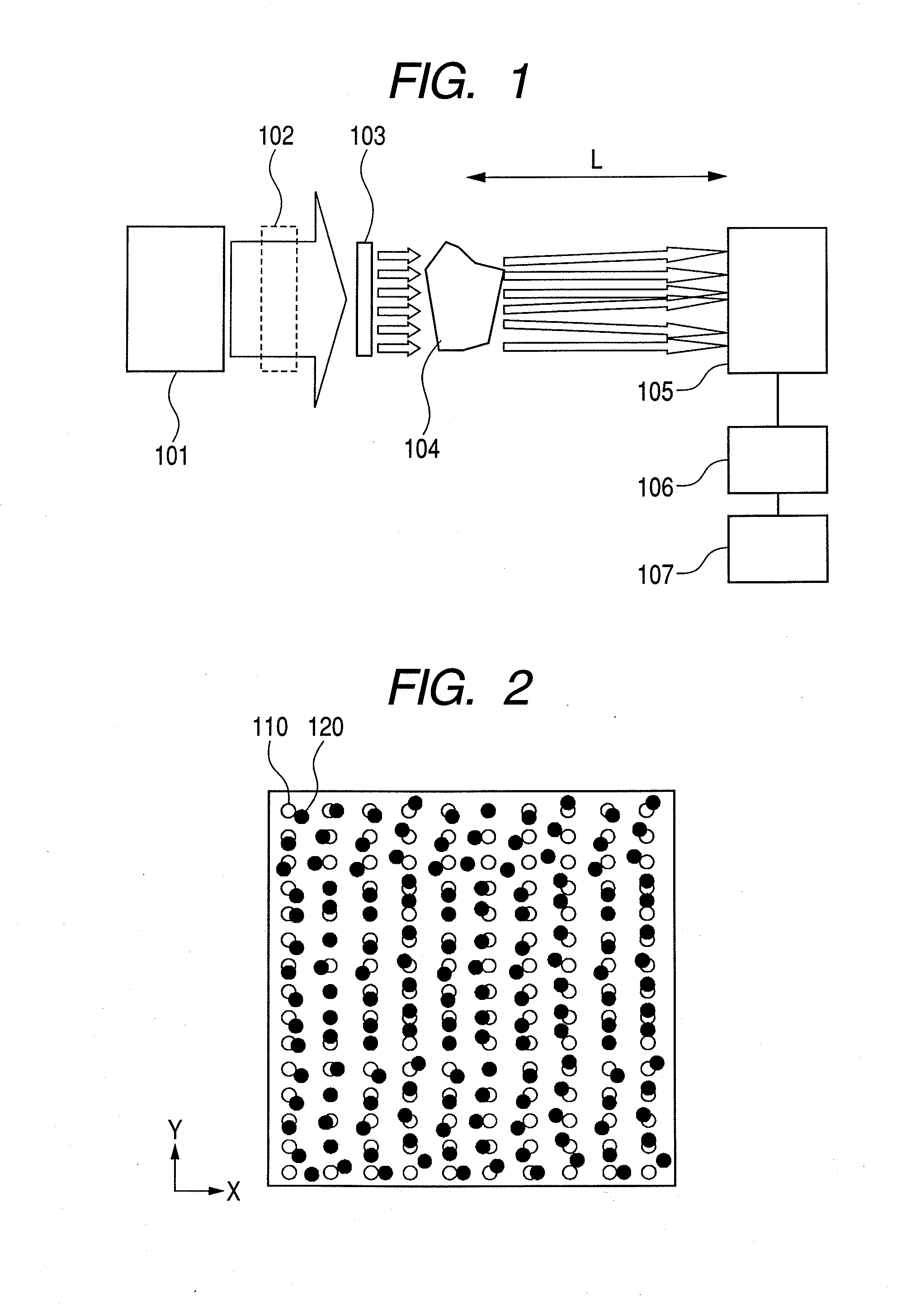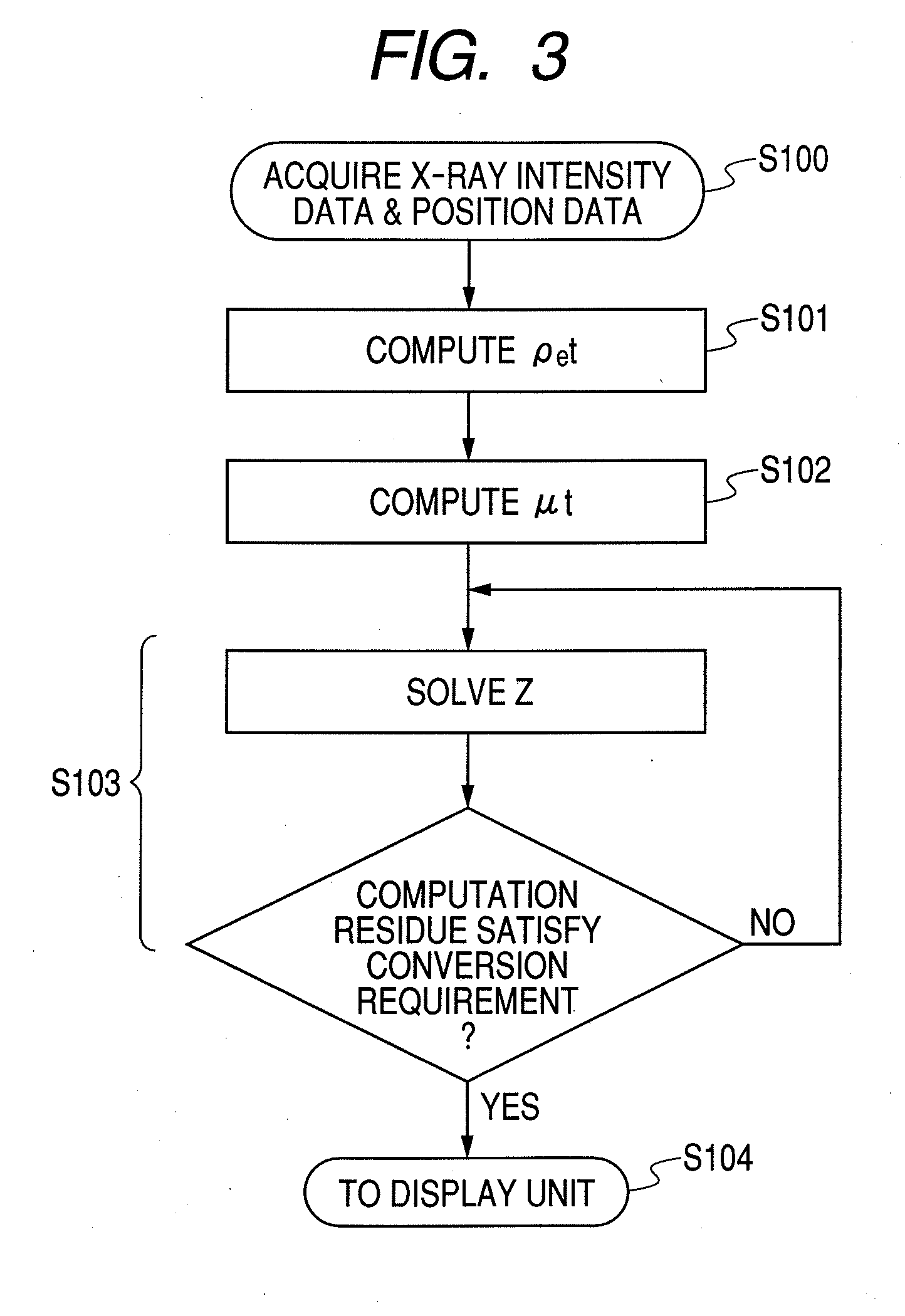X-ray imaging apparatus, x-ray imaging method and method of controlling x-ray imaging apparatus
a technology of x-ray imaging and x-ray imaging apparatus, which is applied in the direction of material analysis using wave/particle radiation, nuclear engineering, and using mechanical means, etc., can solve problems such as errors and device use, and achieve the effect of reducing error factors, and reducing device use costs
- Summary
- Abstract
- Description
- Claims
- Application Information
AI Technical Summary
Benefits of technology
Problems solved by technology
Method used
Image
Examples
first embodiment
[0024]An imaging apparatus and an image pickup method for acquiring the effective atomic number distribution by utilizing the quantity of X-ray phase and the X-ray transmittance will be described here.
[0025]The complex refractive index of X-ray relative to a substance is expressed by formula (1) illustrated below.
n=1−δ−iβ (1)
[0026]The real part in the formula (1) is a term corresponding to phase and the imaginary part is a term corresponding to absorption. For the X-ray absorption of an object of examination, the linear attenuation coefficient μ and the imaginary part β of the complex refractive index of the formula (1) can be defined by formula (2) illustrated below:
μt=4πλ∫βt,(2)
where λ is the X-ray wavelength, which is the effective wavelength when continuous X-rays are used. The symbol t represents the thickness of the object of examination.
[0027]When the intensity of transmitted X-rays is observed by means of an X-ray detector and if the intensity of X-rays is Io in an instance...
second embodiment
[0057]Since the thickness t of the object of examination is unknown, an electron density distribution image cannot be obtained directly by means of the first embodiment if the phase φ is obtained as indicated by the formula (14). A technique of directly obtaining an electron density distribution image on the basis of the principle of computed tomography (CT) will be described in the second embodiment.
[0058]FIG. 4 is a schematic illustration of the CT device described in this embodiment, illustrating the configuration thereof. X-ray source 201, X-ray dividing element 203 and two-dimensional X-ray detector 205 are arranged so as to be synchronously driven to move around an object of examination 204 by a moving mechanism. X-rays that are spatially divided by the X-ray dividing element 203 are irradiated onto the object of examination 204 and transmitted X-rays are detected by the two-dimensional X-ray detector 205. The data obtained by observing parts of the object of examination 204 i...
third embodiment
[0070]A technique of acquiring a differential phase contrast image and an absorption image to obtain an effective atomic number distribution that is different from the technique used in the first embodiment will be described in the third embodiment.
[0071]FIG. 7 is a schematic block diagram of the device described in this embodiment, illustrating the configuration thereof. White X-rays 401 emitted from X-ray source 400 are monochromatized by monochromator 402 that operates as monochromatic device and enter an object of examination 403. X-rays transmitted through the object of examination 403 are diffracted by an analyzer crystal 404 formed by using a single crystal material such as Si and detected by two-dimensional detector 405.
[0072]The solid line in the graph of FIG. 8 illustrates the intensity distribution (rocking curve) of a pixel of the detector obtained when the analyzer crystal 404 is driven to rotate by an angle that satisfies the X-ray diffraction condition in a state wher...
PUM
| Property | Measurement | Unit |
|---|---|---|
| transmittance | aaaaa | aaaaa |
| atomic number | aaaaa | aaaaa |
| electron density | aaaaa | aaaaa |
Abstract
Description
Claims
Application Information
 Login to View More
Login to View More - R&D
- Intellectual Property
- Life Sciences
- Materials
- Tech Scout
- Unparalleled Data Quality
- Higher Quality Content
- 60% Fewer Hallucinations
Browse by: Latest US Patents, China's latest patents, Technical Efficacy Thesaurus, Application Domain, Technology Topic, Popular Technical Reports.
© 2025 PatSnap. All rights reserved.Legal|Privacy policy|Modern Slavery Act Transparency Statement|Sitemap|About US| Contact US: help@patsnap.com



